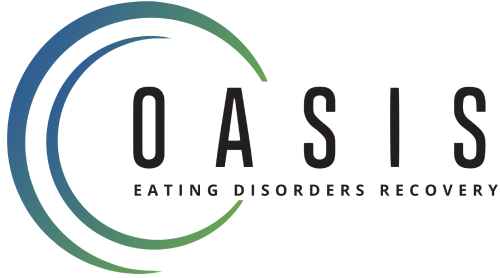While the term “eating disorder” might conjure up images of someone who is excessively thin or who binge eats and then purge, there is actually a range of different conditions that fall under this umbrella, and it affects people of all ages, genders, and backgrounds.
An unhealthy relationship with food and a distorted body image often characterizes eating disorders. People with eating disorders may obsess over their weight, body shape, and the food they eat. They may also engage in dangerous behaviors like crash dieting, purging, and overexercising.
Anorexia nervosa, bulimia nervosa, and binge eating disorder are the most well-known types of eating disorders, but there are others as well. So what are the other types of eating disorders you should be aware of? Read on to find out, and if you think you or someone you know may be suffering from an eating disorder, please seek professional help.
The Common Types of Eating Disorders
1. Anorexia Nervosa
Anorexia nervosa is an eating disorder characterized by an intense fear of gaining weight, self-starvation, and an abnormally low body weight. People with anorexia nervosa may have a distorted body image and see themselves as overweight, even when they are thin. They may diet or exercise excessively to lose weight.
Anorexia nervosa is a severe, potentially life-threatening eating disorder. Anorexia nervosa has the highest mortality rate of any mental disorder. The common signs of anorexia nervosa include the following:
- Significant weight loss
- Intense fear of gaining weight
- A distorted body image
- A preoccupation with food and eating
- An unwillingness to eat in front of others
- Extremely restrictive eating habits
- Excessive exercise
- An irregular menstrual cycle
- Fatigue
- Insomnia
- Constipation
2. Bulimia Nervosa
People with bulimia nervosa often feel out of control when they are eating. They may feel like they cannot stop eating even if they are full. They may eat large amounts of food in a short period. After a binge, people with bulimia nervosa may purge. Purging may be done by self-induced vomiting, excessive exercise, or the use of laxatives or diuretics.
People with bulimia nervosa are at risk for electrolyte imbalances, dehydration, and irregular heartbeat. Bulimia nervosa can also lead to gastrointestinal problems and dental problems. Here are the tell-tale signs of bulimia nervosa:
- Eating large amounts of food quickly
- Feeling out of control during a binge
- Purging after a binge, typically by vomiting, using laxatives, or exercising excessively
- Feeling guilty or ashamed after a binge
- Repeated cycles of bingeing and purging
- Withdrawing from social activities
- Preoccupation with food and body weight
- Extreme weight fluctuations
- Damaged teeth and gums
- Irritation and inflammation of the throat
- Dehydration
- Electrolyte imbalances
- Fatigue
- Anxiety
- Depression
- Irregular menstrual cycles
3. Binge Eating Disorder
Do you feel like you can’t control how much you eat? Do you feel like you eat even when you’re not hungry? Do you feel ashamed or embarrassed about your eating habits? If you answered yes to any of these questions, you might suffer from a binge eating disorder.
During a binge, a person may eat large amounts of food quickly, even if they are not physically hungry. Binge-eating episodes are often followed by feelings of shame, guilt, and embarrassment.
Binge eating disorder is different from overeating. Overeating occasionally is not a disorder. Binge eating disorder is a chronic, relapsing disorder that can have serious physical and psychological consequences. But unlike bulimia, binge eating episodes are not followed by purging behaviors. With that in mind, here are the signs of a binge eating disorder:
- Eating large amounts of food in short periods, despite not feeling hungry
- Lack of control over your eating habits during episodes of binge eating
- Feelings of guilt, shame, and disgust after binge eating
- No behaviors like purging, vomiting, or excessive exercise
4. Pica
Pica is an eating disorder in which people compulsively eat non-food items. The most common items that people with pica eat are paper, dirt, and ice. However, people with pica have been known to eat a wide variety of other items, including but not limited to: paint, hair, feces, and chalk.
Pica is most common in children and pregnant women. It is thought to be caused by a deficiency in nutrients, such as iron or zinc. Pica can also be a symptom of mental illness, such as schizophrenia or autism. Here are the symptoms of pica:
Treatment for pica typically involves addressing the underlying cause. For example, if pica is caused by a nutrient deficiency, then treatment will involve taking supplements or eating foods that are rich in the missing nutrient. If pica is a symptom of mental illness, then treatment will involve addressing the underlying mental illness.
5. Rumination Disorder
Rumination disorder is an eating disorder characterized by regurgitating food that has been previously swallowed. People with rumination disorder often chew their food and then spit it out, or they may vomit after eating. Rumination disorder can lead to malnutrition and other health problems.
The Bottom Line: The Importance of Being Aware of Different Types of Eating Disorders
Eating disorders come in many different forms, and each one has its own unique set of symptoms and effects. If you or someone you know is struggling with an eating disorder, it is important to seek professional help.
If you or a loved one are struggling with an eating disorder, you are not alone. At Oasis Eating Disorders Recovery, we understand the challenges you are facing and are here to help.
Our eating disorder center in Fresno, California, offers a comprehensive and individualized approach to treatment that is designed to meet the unique needs of each client. We offer a variety of services, including individual and group therapy, family therapy, nutritional counseling, and more.
Our goal is to help you or your loved one recover from an eating disorder and live a happy and healthy life. If you are ready to take the first step, we are here to help.

